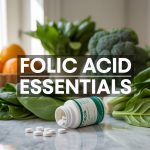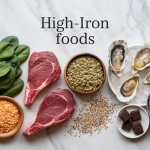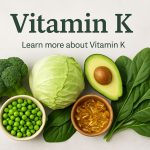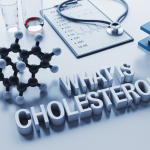Omega-3 supplements have become one of the most popular nutritional additions to daily routines, and for good reason. These essential fatty acids support everything from heart health to brain function, but many people struggle to get enough through diet alone.
This guide is for anyone considering omega-3 supplements or wanting to optimize their current intake—from health-conscious beginners to those already taking supplements but unsure about proper dosing.
We’ll break down the science-backed health benefits that make omega-3s so valuable for your body. You’ll also learn how to compare natural food sources with supplement options to make the best choice for your lifestyle and budget. Finally, we’ll cover practical dosage guidelines so you can get maximum benefits without guessing how much to take.
Understanding Omega-3 Fatty Acids and Their Importance
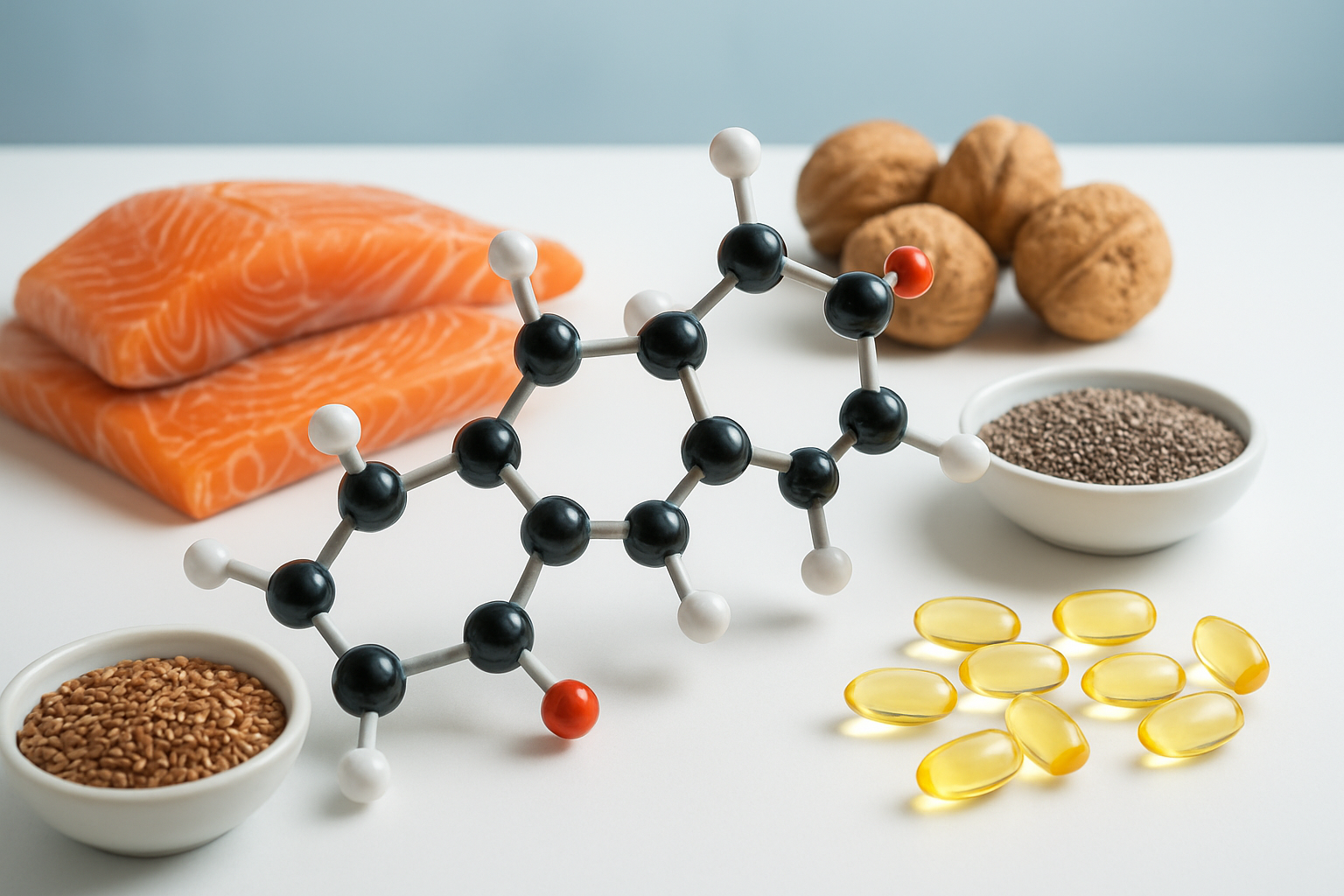
Essential fatty acids your body cannot produce naturally
Your body operates like a complex manufacturing plant, producing thousands of compounds daily to keep you healthy. But when it comes to omega-3 fatty acids, your internal factory hits a roadblock. Unlike other fats your body can synthesize from various building blocks, omega-3s must come directly from your diet or supplements.
This inability to produce omega-3s internally places them in the “essential fatty acid” category alongside omega-6 fatty acids. Think of essential fatty acids as VIP nutrients – your body absolutely needs them to function properly, but you’re entirely dependent on external sources to get them. Without adequate omega-3 intake, your cells begin operating at suboptimal levels, potentially affecting everything from brain function to heart health.
The word “essential” here carries significant weight in nutritional science. Just as your body cannot manufacture vitamin C or certain amino acids, the absence of omega-3 production machinery means you must actively seek these fats through food choices or supplementation to maintain optimal health.
Three main types: EPA, DHA, and ALA explained
The omega-3 family consists of three primary members, each with distinct characteristics and health benefits. Understanding these differences helps you make informed decisions about your nutritional intake.
Alpha-linolenic acid (ALA) serves as the plant-based foundation of the omega-3 family. You’ll find ALA in flaxseeds, chia seeds, walnuts, and hemp seeds. Your body can convert small amounts of ALA into the more bioactive forms, but this conversion process is remarkably inefficient – typically less than 10% of consumed ALA transforms into usable EPA and DHA.
Eicosapentaenoic acid (EPA) primarily supports cardiovascular health and inflammatory response regulation. This marine-derived omega-3 acts as a precursor to specialized molecules called resolvins, which help resolve inflammation naturally. EPA concentrations are highest in cold-water fish like salmon, mackerel, and sardines.
Docosahexaenoic acid (DHA) dominates brain tissue and retinal structure, comprising roughly 40% of polyunsaturated fatty acids in your brain. DHA plays crucial roles in neuronal membrane fluidity, cognitive function, and visual development. Pregnant women particularly need adequate DHA for fetal brain development.
| Omega-3 Type | Primary Sources | Main Benefits | Conversion Rate |
|---|---|---|---|
| ALA | Plant sources (flax, chia, walnuts) | Basic omega-3 foundation | <10% to EPA/DHA |
| EPA | Marine sources (fish, algae) | Heart health, inflammation control | Direct utilization |
| DHA | Marine sources (fish, algae) | Brain function, eye health | Direct utilization |
Critical role in cellular function and overall health
Omega-3 fatty acids integrate into cell membranes throughout your body, directly influencing cellular behavior and communication. These fats don’t just sit passively in membrane structures – they actively participate in cellular signaling pathways that control inflammation, blood flow, and tissue repair.
At the cellular level, omega-3s maintain membrane fluidity, allowing nutrients to enter cells efficiently while waste products exit smoothly. This membrane flexibility becomes especially important in brain cells, where rapid electrical impulses require optimal membrane conditions for proper neurotransmitter function.
Your immune system relies heavily on omega-3 fatty acids to produce specialized pro-resolving mediators (SPMs) – powerful compounds that actively resolve inflammation rather than simply suppressing it. This resolution process prevents chronic inflammation from damaging healthy tissues over time.
Cardiovascular benefits emerge from omega-3s’ ability to influence blood vessel function, reduce triglyceride levels, and support healthy blood pressure. These fatty acids help prevent dangerous blood clots while maintaining proper heart rhythm through their effects on cardiac electrical activity.
The brain’s high concentration of DHA reflects its fundamental importance in cognitive processes. Adequate omega-3 levels support memory formation, mood regulation, and age-related cognitive protection. Research consistently shows that populations with higher omega-3 intake experience better mental clarity and reduced risk of neurodegenerative diseases.
Proven Health Benefits of Omega-3 Supplements
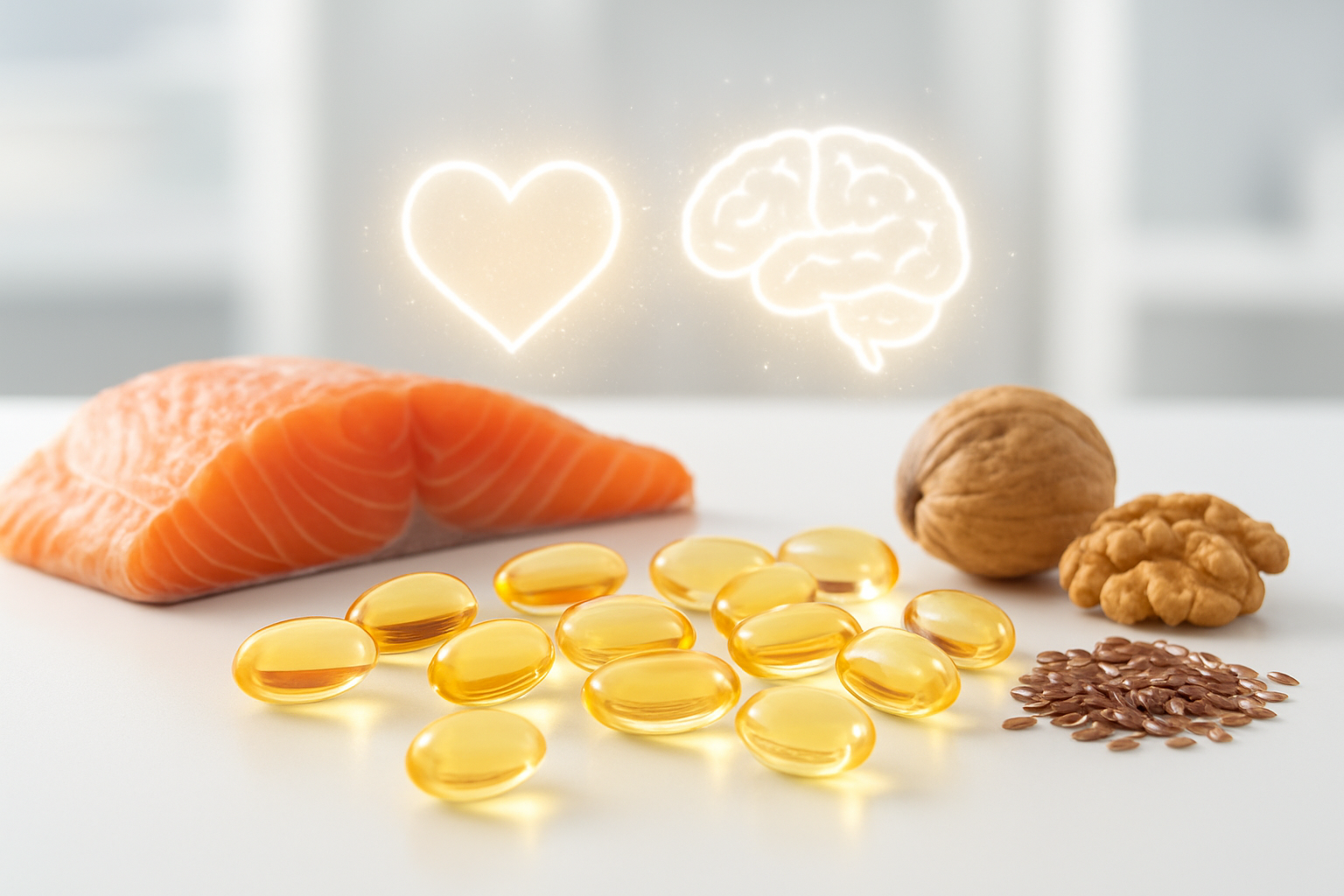
Cardiovascular Health Improvements and Heart Disease Prevention
Omega-3 supplements pack a powerful punch when it comes to protecting your heart. Regular supplementation can reduce triglyceride levels by 15-30%, which is significant since high triglycerides are a major risk factor for heart disease. These essential fatty acids also help lower blood pressure, with studies showing reductions of 3-5 mmHg in both systolic and diastolic readings.
The anti-arrhythmic properties of omega-3s are particularly impressive. They help stabilize heart rhythm by modulating ion channels in cardiac cells, reducing the risk of dangerous irregular heartbeats that can lead to sudden cardiac death. Research indicates that people who take omega-3 supplements have a 10% lower risk of heart attack and a 13% reduction in coronary heart disease events.
Omega-3s also improve arterial function by enhancing endothelial health – the inner lining of blood vessels. This leads to better blood flow and reduced arterial stiffness. The supplements help prevent the formation of blood clots and reduce inflammation in arterial walls, which can prevent the buildup of dangerous plaques.
Brain Function Enhancement and Cognitive Protection
Your brain is roughly 60% fat, and omega-3 fatty acids make up a substantial portion of that. DHA (docosahexaenoic acid) is especially concentrated in brain cell membranes, where it supports communication between neurons and maintains membrane fluidity.
Regular omega-3 supplementation has been shown to improve memory, focus, and processing speed. Studies with older adults reveal that those taking omega-3 supplements perform better on cognitive tests and show slower rates of brain shrinkage compared to those not supplementing.
The neuroprotective benefits extend to mood regulation as well. Omega-3s help produce neurotransmitters like serotonin and dopamine, which regulate mood and emotional well-being. Clinical trials have demonstrated that omega-3 supplementation can be as effective as some antidepressants for mild to moderate depression, with response rates reaching 60-70% in some studies.
For developing brains, omega-3s are crucial for proper neural development and can improve attention span and learning abilities in children. Pregnant women who supplement with omega-3s often have children with better cognitive development scores.
Reduced Inflammation Throughout the Body
Chronic inflammation is the silent killer behind many modern diseases, and omega-3s are nature’s most potent anti-inflammatory compounds. They work by producing specialized pro-resolving mediators (SPMs) that actively resolve inflammation rather than simply suppressing it.
These supplements can reduce key inflammatory markers like C-reactive protein (CRP), interleukin-6, and tumor necrosis factor-alpha by 10-20%. This system-wide reduction in inflammation helps protect against autoimmune diseases, metabolic syndrome, and even certain cancers.
The anti-inflammatory effects are particularly beneficial for people with inflammatory bowel diseases, where omega-3 supplementation can reduce flare-ups and improve intestinal healing. Athletes also benefit from reduced exercise-induced inflammation, leading to faster recovery times and less muscle soreness.
Eye Health Support and Vision Maintenance
DHA makes up about 30% of the fatty acids in your retina, making omega-3s essential for maintaining sharp vision. Regular supplementation helps prevent age-related macular degeneration (AMD), the leading cause of blindness in people over 50.
Studies show that people with higher omega-3 levels have a 38% lower risk of developing late-stage AMD. The supplements also help maintain the oil layer of tears, reducing dry eye symptoms that affect millions of people worldwide.
For computer users and those exposed to blue light, omega-3s provide additional protection by strengthening retinal cell membranes and reducing oxidative stress. They also support proper blood flow to the eyes, ensuring adequate nutrient delivery to delicate eye tissues.
Joint Health and Arthritis Symptom Relief
Omega-3 supplements can significantly reduce joint pain and stiffness associated with rheumatoid arthritis and osteoarthritis. They work by reducing the production of inflammatory enzymes that break down cartilage and cause joint damage.
Clinical studies show that people taking omega-3 supplements experience 20-30% reductions in joint pain and morning stiffness. Many participants are able to reduce their reliance on NSAIDs (non-steroidal anti-inflammatory drugs), which can have harmful side effects with long-term use.
The supplements also help preserve cartilage by reducing the activity of metalloproteinases – enzymes that degrade cartilage matrix. This protective effect can slow the progression of osteoarthritis and maintain joint function longer. Regular supplementation also improves joint lubrication and flexibility, making daily activities more comfortable.
Natural Food Sources vs Supplement Options

Fatty fish and marine sources for optimal absorption
Cold-water fatty fish remain the gold standard for omega-3 intake, delivering EPA and DHA in their most bioavailable forms. Salmon, mackerel, sardines, anchovies, and herring pack the highest concentrations of these essential fatty acids. Wild-caught varieties typically contain more omega-3s than their farm-raised counterparts, though both provide substantial benefits.
| Fish Type | EPA + DHA (per 3.5 oz) | Best Preparation |
|---|---|---|
| Atlantic Mackerel | 2.6g | Grilled or baked |
| Salmon | 1.8g | Any method |
| Sardines | 1.5g | Canned or fresh |
| Anchovies | 1.4g | Fresh or canned |
| Herring | 1.7g | Smoked or pickled |
Marine sources beyond fish offer additional options. Krill oil provides phospholipid-bound omega-3s that some research suggests may be better absorbed than traditional fish oil. Algae-derived supplements deliver the same EPA and DHA found in fish, since fish actually obtain these fatty acids from the algae they consume.
The absorption advantage of marine sources comes from their direct EPA and DHA content. Your body doesn’t need to convert these fatty acids like it does with plant sources, making them immediately available for cellular functions.
Plant-based sources for vegetarians and vegans
Plant-based omega-3 sources primarily provide alpha-linolenic acid (ALA), which your body must convert to EPA and DHA. This conversion process is notoriously inefficient, with only 5-10% of ALA converting to EPA and less than 2% becoming DHA.
Top plant sources include:
- Flaxseeds and flax oil: Highest ALA concentration among plant foods
- Chia seeds: Convenient omega-3 addition to smoothies and yogurt
- Walnuts: Easy snacking option with decent ALA content
- Hemp seeds: Balanced omega-3 to omega-6 ratio
- Algae oil supplements: Direct source of EPA and DHA for vegans
Women generally convert ALA more efficiently than men, likely due to estrogen’s influence on the conversion enzymes. However, even with optimal conversion, plant sources rarely provide adequate EPA and DHA levels for therapeutic benefits.
Vegans and vegetarians should consider algae-based supplements to bridge this gap. These supplements bypass the conversion limitation by providing pre-formed EPA and DHA derived from marine microalgae.
When whole foods aren’t enough for your needs
Several situations make supplementation necessary even with a fish-rich diet. People with inflammatory conditions like rheumatoid arthritis or heart disease often need therapeutic doses of 2-4 grams daily – amounts difficult to achieve through food alone without consuming excessive calories.
Supplementation becomes essential when:
- You rarely eat fatty fish (less than twice weekly)
- You have specific health conditions requiring higher doses
- You’re pregnant or breastfeeding and need guaranteed DHA intake
- You follow a vegetarian or vegan diet
- You have digestive issues affecting nutrient absorption
- You live in areas where fresh fish access is limited
Quality fish contains about 1 gram of omega-3s per serving. Meeting therapeutic recommendations would require eating fatty fish daily, which raises concerns about mercury exposure and becomes impractical for most people.
Supplements also offer consistency that whole foods can’t match. Wild salmon omega-3 content varies seasonally, while supplements provide standardized doses. This reliability becomes crucial when using omega-3s to manage specific health conditions or support athletic performance.
Consider combining both approaches: eat fatty fish 2-3 times weekly for the additional nutrients fish provides (protein, vitamin D, selenium) while using supplements to reach optimal omega-3 levels consistently.
Choosing the Right Omega-3 Supplement Form

Fish Oil Capsules and Liquid Formulations
Fish oil capsules remain the most popular omega-3 supplement choice, offering convenience and precise dosing. These softgel capsules contain concentrated omega-3 fatty acids extracted from fish like salmon, sardines, and anchovies. The main advantage lies in their portability and lack of fishy taste when properly manufactured with enteric coating.
Liquid fish oil formulations provide higher potency per serving and faster absorption rates. Many people find liquids more cost-effective since you get more omega-3s per dollar spent. However, the taste can be challenging, even with natural flavoring like lemon or orange. Refrigeration is typically required to maintain freshness and prevent rancidity.
Both forms offer similar bioavailability when sourced from quality manufacturers. Capsules work better for travel and consistent daily routines, while liquids suit those needing higher doses or having difficulty swallowing pills.
Algae-Based Supplements for Plant-Based Diets
Algae-derived omega-3 supplements provide a sustainable, vegan-friendly alternative to fish oil. These supplements source EPA and DHA directly from marine algae – the same organisms fish consume to build their omega-3 content.
The primary benefit of algae supplements is their environmental sustainability. Unlike fish oil, algae cultivation doesn’t contribute to overfishing or ocean ecosystem disruption. The omega-3 profile closely matches fish oil, containing both EPA and DHA in effective ratios.
Algae supplements typically cost more than traditional fish oil due to specialized extraction processes. However, they’re free from ocean pollutants like mercury, PCBs, and microplastics that can contaminate fish-based products. The taste profile is generally milder and less offensive than fish oil.
Absorption rates compare favorably to fish oil supplements. Studies show similar bioavailability between algae-based and fish-derived omega-3s, making them equally effective for meeting daily requirements.
Krill Oil Benefits and Unique Properties
Krill oil offers several distinct advantages over traditional fish oil supplements. The omega-3 fatty acids in krill oil are bound to phospholipids rather than triglycerides, potentially improving absorption and bioavailability. This phospholipid structure mirrors the composition of cell membranes, allowing for more efficient uptake.
Krill oil naturally contains astaxanthin, a powerful antioxidant that gives krill their reddish color. This antioxidant helps protect the omega-3 fatty acids from oxidation and provides additional anti-inflammatory benefits. The astaxanthin content means krill oil supplements typically don’t require artificial preservatives.
The smaller molecular structure of krill oil means less likelihood of fishy burps or aftertaste compared to traditional fish oil. Many users report better digestive tolerance with krill oil supplements.
Krill oil typically contains lower overall omega-3 concentrations per capsule compared to concentrated fish oil. This means you might need more capsules to achieve the same omega-3 intake, which can increase cost per serving.
Quality Indicators and Purity Standards to Consider
Third-party testing represents the gold standard for omega-3 supplement quality verification. Look for certifications from organizations like IFOS (International Fish Oil Standards) or USP (United States Pharmacopeia). These certifications verify potency, purity, and freshness through independent laboratory analysis.
Oxidation levels matter significantly for omega-3 effectiveness. Check for peroxide values, anisidine values, and TOTOX scores on product labels or certificates of analysis. Lower numbers indicate fresher, more stable products. Fresh omega-3 supplements should have minimal fishy odor and taste.
Heavy metal contamination requires careful attention, especially with fish-derived supplements. Quality manufacturers test for mercury, lead, cadmium, and arsenic, providing certificates showing levels well below safety limits established by regulatory agencies.
Molecular distillation and other purification processes remove environmental contaminants while concentrating omega-3 content. Look for supplements that specify their purification methods and contamination testing protocols.
| Quality Factor | What to Look For | Red Flags |
|---|---|---|
| Third-party testing | IFOS, USP certification | No testing mentioned |
| Freshness | Low peroxide/TOTOX values | Strong fishy smell |
| Purity | Heavy metal test results | Vague “pharmaceutical grade” claims |
| Concentration | Specific EPA/DHA amounts | Total omega-3 without breakdown |
Optimal Dosage Guidelines for Maximum Benefits

General Daily Recommendations for Healthy Adults
Most health organizations recommend 250-500mg of combined EPA and DHA daily for healthy adults. The American Heart Association suggests eating fatty fish at least twice per week, which typically provides about 500mg of omega-3s per day. For those who don’t consume fish regularly, a daily supplement containing 1000mg of fish oil (providing roughly 300mg of EPA/DHA) covers basic needs.
Women who are pregnant or breastfeeding need higher amounts – around 650mg daily, with at least 300mg coming from DHA to support fetal brain development. The body can’t produce omega-3s on its own, making consistent daily intake essential for maintaining optimal levels.
Age also plays a role in dosing. Adults over 65 may benefit from slightly higher doses (up to 1000mg of EPA/DHA daily) to support cognitive function and reduce inflammation associated with aging.
Therapeutic Doses for Specific Health Conditions
Certain health conditions require significantly higher omega-3 doses than general maintenance amounts. Clinical studies show these therapeutic ranges:
| Condition | Daily EPA/DHA Dose | Duration |
|---|---|---|
| High triglycerides | 2000-4000mg | Ongoing |
| Depression | 1000-2000mg EPA | 8-12 weeks |
| Rheumatoid arthritis | 2600-5200mg | 3-4 months |
| Dry eye syndrome | 1000-2000mg | 6-12 weeks |
| ADHD (children) | 500-1000mg | 8-16 weeks |
Heart disease patients often need prescription-strength omega-3s containing 4000mg of EPA daily. These high doses should only be taken under medical supervision, as they can affect blood clotting and interact with medications.
For joint pain and inflammation, therapeutic doses typically start at 2000mg daily and may increase based on symptom response. Mental health applications usually focus on EPA-dominant formulas, while cognitive support emphasizes DHA.
Adjusting Intake Based on Dietary Omega-3 Consumption
Your food intake directly impacts how much supplemental omega-3 you need. Regular fish eaters can often reduce supplement doses, while vegetarians and vegans typically need higher amounts to compensate for limited dietary sources.
Calculate your current intake using these approximations:
- Salmon (3.5oz): 1800mg EPA/DHA
- Sardines (3.5oz): 1400mg EPA/DHA
- Mackerel (3.5oz): 1100mg EPA/DHA
- Walnuts (1oz): 2500mg ALA
- Flax seeds (1 tbsp): 1600mg ALA
Remember that ALA (from plant sources) converts poorly to EPA and DHA – only about 5-10% converts effectively. If you eat fatty fish twice weekly, you might only need 250-500mg from supplements. Those avoiding fish entirely should aim for 1000-2000mg daily from algae-based supplements.
Blood testing can provide precise omega-3 levels, helping you fine-tune dosing. The Omega-3 Index test measures red blood cell fatty acid content, with 8-12% considered optimal for heart health.
Safety Considerations and Potential Side Effects
Most people tolerate omega-3 supplements well, but higher doses can cause side effects. Common issues include:
Mild side effects:
- Fishy burps or aftertaste
- Nausea or stomach upset
- Loose stools or diarrhea
- Bad breath
Taking supplements with meals and choosing enteric-coated capsules reduces digestive issues. Freezing fish oil capsules before taking them also minimizes fishy burps.
Serious considerations:
- Blood thinning effects at doses above 3000mg daily
- Potential interactions with warfarin and other blood thinners
- Increased bleeding risk during surgery (stop supplements 1-2 weeks before procedures)
- Possible immune system suppression at very high doses
People with fish or shellfish allergies can usually take fish oil supplements safely, as properly refined oils contain minimal allergenic proteins. However, those with severe allergies should choose algae-based alternatives.
Quality matters significantly for safety. Choose supplements tested for heavy metals, PCBs, and other contaminants. Third-party certifications from NSF, USP, or IFOS provide quality assurance.
Pregnant women should avoid high-mercury fish but can safely take purified omega-3 supplements. Children can take age-appropriate doses, typically 100-300mg daily for ages 2-12.
Always consult healthcare providers before starting high-dose omega-3 therapy, especially if you take medications or have bleeding disorders.
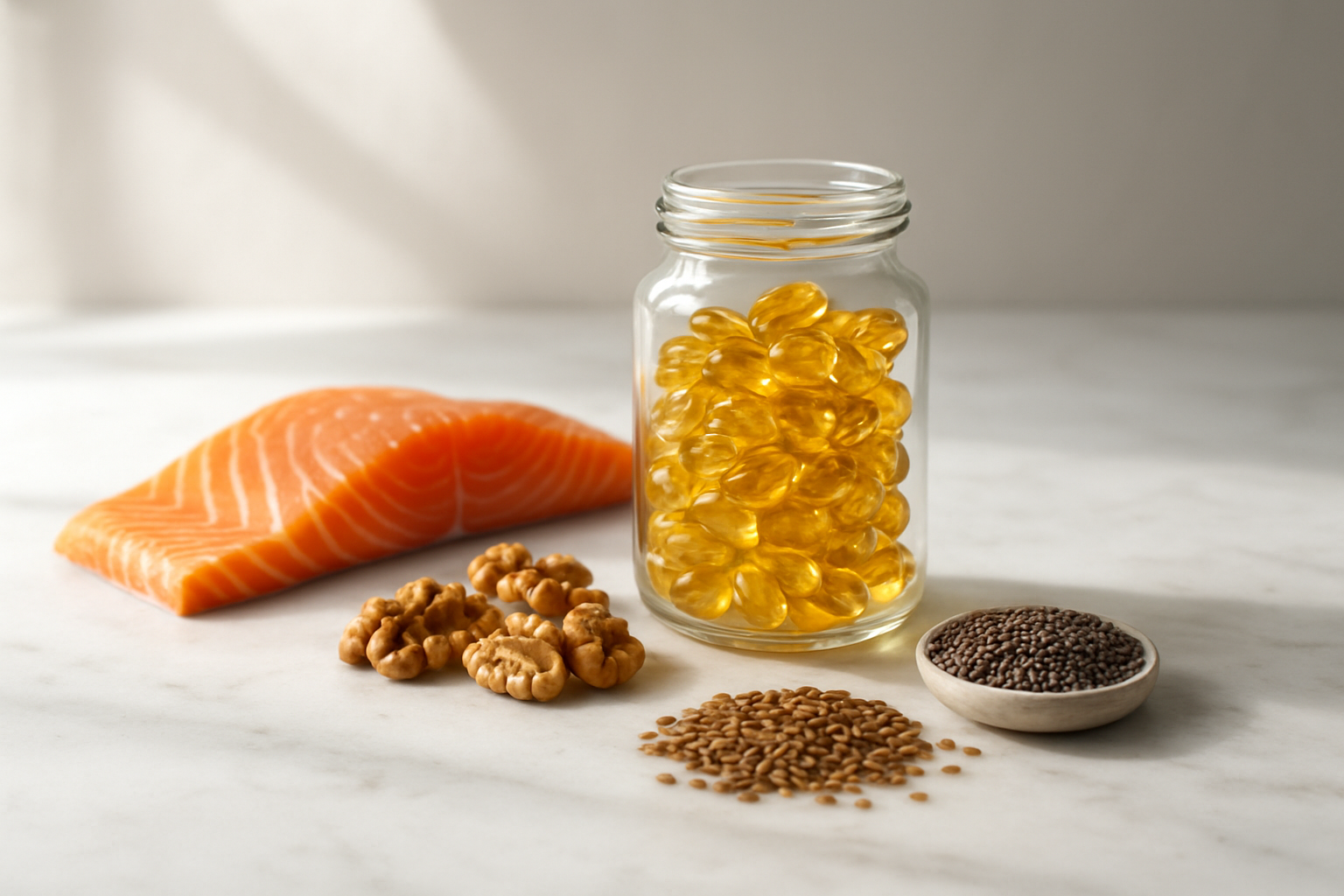
Omega-3 fatty acids play a crucial role in supporting your heart, brain, and overall health, making them one of the most valuable nutrients you can add to your daily routine. While fatty fish like salmon and sardines remain excellent natural sources, high-quality supplements offer a convenient way to meet your daily needs, especially if you don’t eat fish regularly. The key is choosing the right form—whether EPA-dominant for heart health, DHA-rich for brain function, or a balanced combination for general wellness.
Getting your dosage right makes all the difference in seeing real results. Most adults benefit from 1000-2000mg of combined EPA and DHA daily, but your specific needs may vary based on your health goals and current diet. Start with a reputable brand that third-party tests for purity, and consider consulting your healthcare provider to determine the best approach for your situation. Your body will thank you for making this simple yet powerful addition to your wellness routine.

